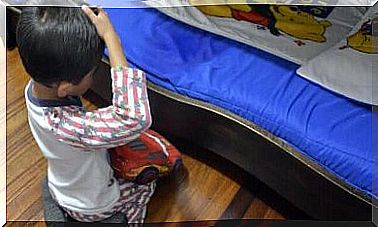The Opening Phase: The First Stage Of Childbirth

The birth consists of several stages, the first of which is the opening phase. Did you know that your birth canal can expand up to 10 centimeters?
Without a doubt, it’s amazing what your body can do to give birth to a baby. If you want to know more about the opening phase, keep reading.
The opening phase is the process during which the cervix dilates and the amniotic membranes rupture, so that the amniotic fluid flows out. The channel that forms connects directly to the vagina.
The opening phase is a slow and painful process, but it prepares you for the moment you have been waiting for: the birth of your child.
Many women experience the opening phase as something completely unbearable. This is especially true for first-time mothers because it takes them a long, long time to expand sufficiently. It’s really hard to put up with the pain for so many hours.
If you still have not gone through this experience, you are probably a little worried about the pain we are talking about. But do not worry, it is normal to be nervous.
We will tell you everything you need to know about the opening phase.
What triggers the opening phase?
When your uterus contracts, the muscle fibers in the uterine wall contract, stretch and spread. These contractions give rise to aches that become stronger as you approach the birth of the baby.

The opening phase can be divided into two main phases:
- Passive expansion. Even if this initial phase only makes you 3 cm open, it is the longest phase. Irregular pains cause you to expand, and they become more intense and frequent over time.
- Active expansion. The second and last phase of the opening gives you 3 cm to 10 cm opening. This phase is much faster than the previous one because the contractions are much more frequent and intense. When you reach 10 cm, you are officially in the expulsion phase.
What can I do to facilitate the opening phase?
We know it’s hard, but try to stay as calm as possible. Unfortunately, your peace of mind will not make the process much faster.
Rather, it is about letting nature take over. Let your body do what it is ready to do.
If you are noticeably nervous or scared, your muscles will tense up the wrong way. This will only make you more uncomfortable and make the opening phase more difficult.
Taking a walk can help your baby get into the right position to push through the birth canal.
Walking also contributes to the opening of the uterus. In addition, a walk can help relieve some of the pain and relieve numbness.
There are also different positions you can test that will surely help:
- Lie down on a bed on your side and place a pillow between your legs. This position helps to open the uterus, and it also helps your back.
- Sit on a backward-facing chair. This allows the back to rest and will accelerate the opening phase.
- Go down on all fours on your bed. Slowly swing your body back and forth.
- Finally, you can use a pilates ball. These balls are beneficial during pregnancy and especially during the prolonged opening phase. Sit down on the ball and find the balance and bounce very easily up and down the ball.

Epidural during the opening phase
An epidural is an injection that is inserted into the spine or vertebrae. It is a local anesthetic and numbs the lower half of your body (from the waist down).
When we talk about epidurals and the opening phase, several questions often come up.
- Does it hurt? The epidural is injected into a sensitive area, so you may experience discomfort when the injection takes place.
- Will I feel anything at all? When the epidural works effectively, you will not lose the sensation completely, but you will feel a great relief from the pain of your contractions. The labor continues as before, but without as much pain.
- Does the epidural opening phase take longer? New research confirms that enlargement does not take longer with an epidural.
If you have more questions, talk to your gynecologist, doula or midwife. They will be able to help you understand everything you need to know about epidurals and their application during labor.









